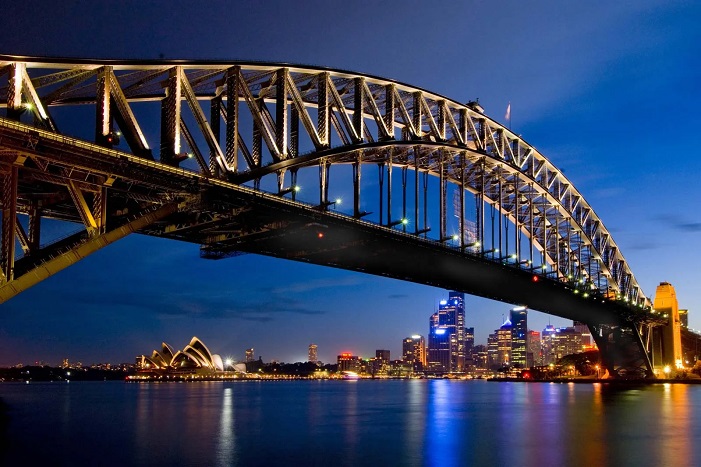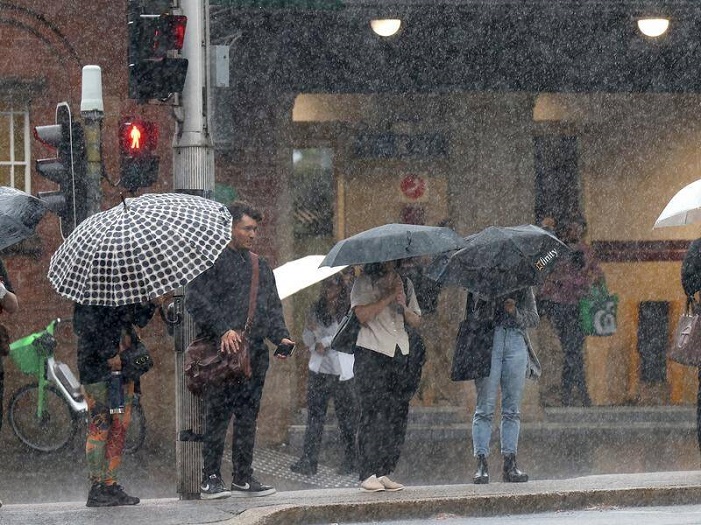Contents
Sydney is known for its beautiful beaches, sunny days, and fun outdoor lifestyle. The weather plays a big role in this. Knowing what the weather will be like will help you plan your time in the city. In this article, we’ll look at what the weather in Sydney is like throughout the year and how you can prepare for each season.
Sydney Weather: A Quick Overview

Sydney has a mild climate. It’s usually warm, but not too hot, and it doesn’t get too cold either. The weather changes from season to season, so it’s good to know what to expect. There are sunny days, some rain, and even a few storms. But overall, the weather is great for outdoor fun.
Summer in Sydney: Hot and Sunny
Summer in Sydney is from December to February. It’s the hottest time of the year. The days are long and full of sunshine. You can expect warm days with temperatures around 25°C (77°F), but it can also get over 35°C (95°F) during heatwaves. Humidity is higher, which can make it feel hotter.
Summer is the best time for the beach. You can swim, surf, or just relax by the water. But the sun is very strong in summer. It’s important to protect your skin. Wear sunscreen, sunglasses, and a hat to stay safe. Drink plenty of water to stay cool.
What to Wear: Light clothes are best. Don’t forget your sunscreen, hat, and sunglasses. If you plan to hit the beach, a swimsuit is a must!
Autumn in Sydney: Mild and Comfortable
Autumn runs from March to May. It’s cooler than summer, but still very comfortable. The daytime temperatures are usually between 15°C (59°F) and 22°C (72°F). Nights are cooler, so you may need a jacket.
Autumn is a beautiful time in Sydney. The parks and gardens show off their fall colors. There’s a little more rain, but most days are still sunny and mild. This season is perfect for a walk or outdoor activities.
What to Wear: You’ll need layers. A light jacket or sweater works well. Comfortable shoes are great for walking around Sydney’s parks and gardens.
Winter in Sydney: Cool and Cozy
Winter is from June to August. The weather is cooler but still mild compared to many other places. Daytime temperatures are between 8°C (46°F) and 17°C (63°F). Nights can be chilly, but it doesn’t snow or get too cold.
Winter is the perfect time to explore museums and cafes. It’s also a great time to visit without the big crowds. It may rain a little more in winter, but the showers are usually short.
What to Wear: A warm jacket or coat will keep you cozy. You may also want scarves and hats for extra warmth. You’ll probably be indoors more in winter, so bring some indoor clothes.
Spring in Sydney: Fresh and Beautiful
Spring is from September to November. It’s one of the best times to visit. The weather is mild, and the days are sunny. The temperature usually ranges from 15°C (59°F) to 22°C (72°F). The flowers bloom, and the city looks colorful.
Spring is also a great time for outdoor events and festivals. There may be some rain, but it’s usually light and quick. You can still enjoy all the outdoor activities Sydney has to offer.
What to Wear: You can layer your clothes in spring. A light jacket or sweater is perfect. Comfortable shoes are great for walking around the city.
Sydney Weather: Rain and Storms

Sydney can have some rain, especially in the summer. The rain usually comes in short bursts, and the sun comes back out afterward. You may also see storms with strong winds.
Autumn and spring bring a little more rain, but it’s usually light. Winter is drier, so you won’t need to worry about rain as much. Still, it’s always a good idea to check the weather forecast.
How to Stay Safe During Storms
When storms happen, stay inside until they pass. Keep an eye on weather reports. If you’re outside, bring an umbrella or raincoat. Watch out for places that flood easily. Staying safe is the most important thing.
The Best Time to Visit Sydney Based on Weather
The best time to visit depends on what you like. If you enjoy the beach, summer is the best time. If you prefer cooler weather, autumn and spring are great choices. Winter is perfect for exploring the city’s indoor attractions.
No matter when you visit, Sydney has great weather to offer. Pack the right clothes for the season, and you’ll have an amazing time!
Conclusion
Sydney’s weather is one of the reasons why people love visiting. From sunny beach days in summer to cool, comfortable weather in autumn and spring, there’s always something to enjoy. Check the weather forecast before you leave and pack for the season. Sydney will always have something special to offer.
FAQs About Sydney Weather
1. How hot does it get in Sydney during summer?
Sydney can get very hot in summer, with temperatures over 35°C (95°F) during heatwaves. Drink water and protect your skin.
2. Does Sydney get a lot of rain?
Sydney gets most of its rain in summer. It’s usually quick, but you might get caught in a shower.
3. What’s the coldest month in Sydney?
July is the coldest month. Temperatures can drop to around 8°C (46°F) at night.
4. Is winter a good time to visit Sydney?
Yes! Winter is mild and a good time to visit the city without the crowds.
5. How can I prepare for Sydney’s sudden weather changes?
Check the weather daily. Carry an umbrella or raincoat, especially in summer and spring.
6. Can I swim in Sydney’s beaches all year round?
Yes, Sydney’s beaches are great for swimming year-round. However, summer is the most popular season for beachgoers.
7. What type of clothing should I pack for Sydney in autumn?
Pack layers for autumn. A light jacket or sweater will keep you comfortable during cooler mornings and evenings.
8. Are there any weather warnings in Sydney during storm season?
Yes, Sydney can experience storms with strong winds and heavy rain. Always stay informed through weather reports and take necessary precautions.
9. What’s the best time to visit Sydney for outdoor activities?
Spring and autumn are perfect for outdoor activities due to mild weather and less rain. Summer is also great for the beach.
10. Does Sydney experience extreme weather conditions like floods or snow?
Sydney rarely experiences snow. Flooding can occur, especially during heavy rainfall, so it’s best to avoid flood-prone areas during storms.



